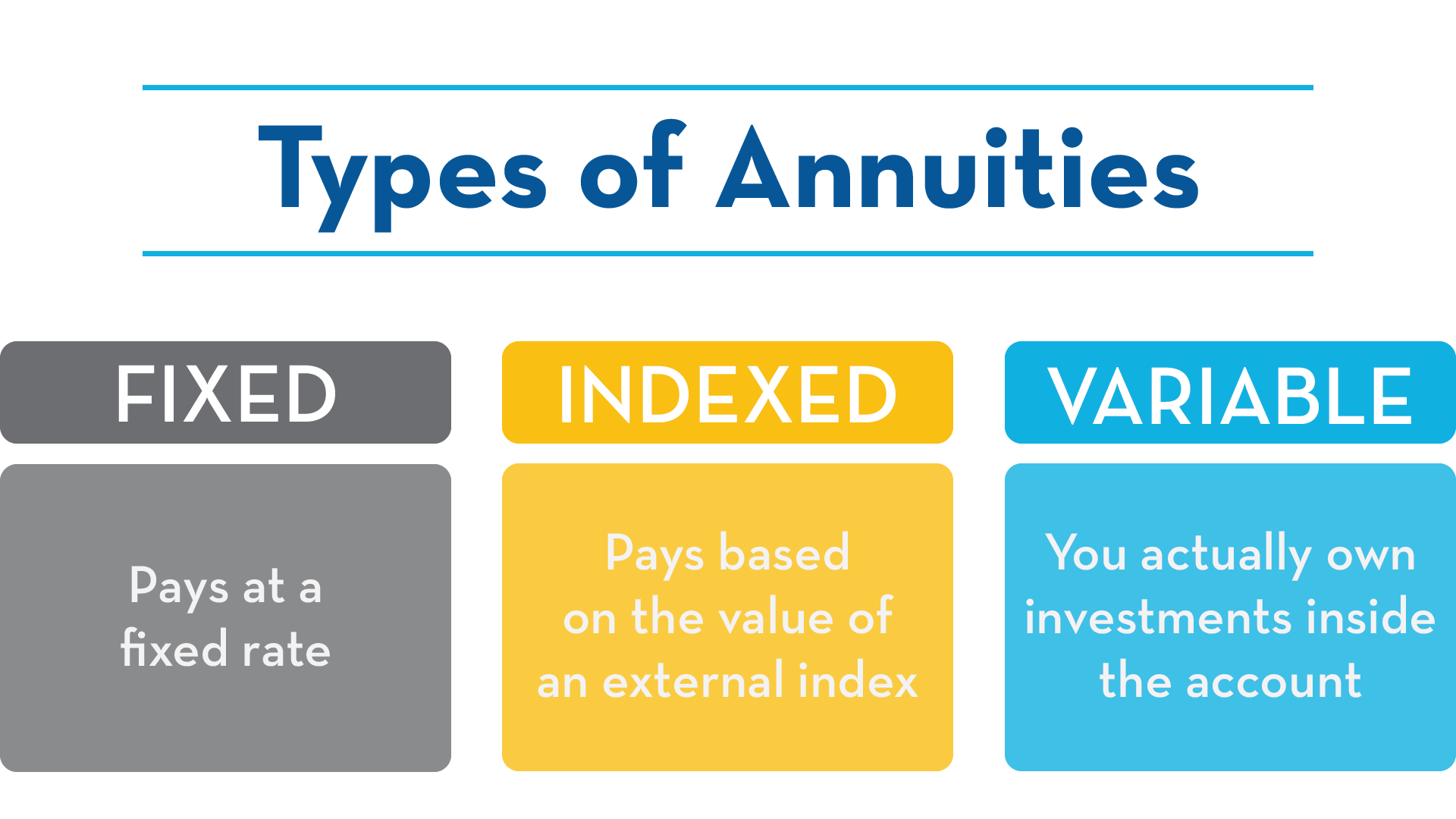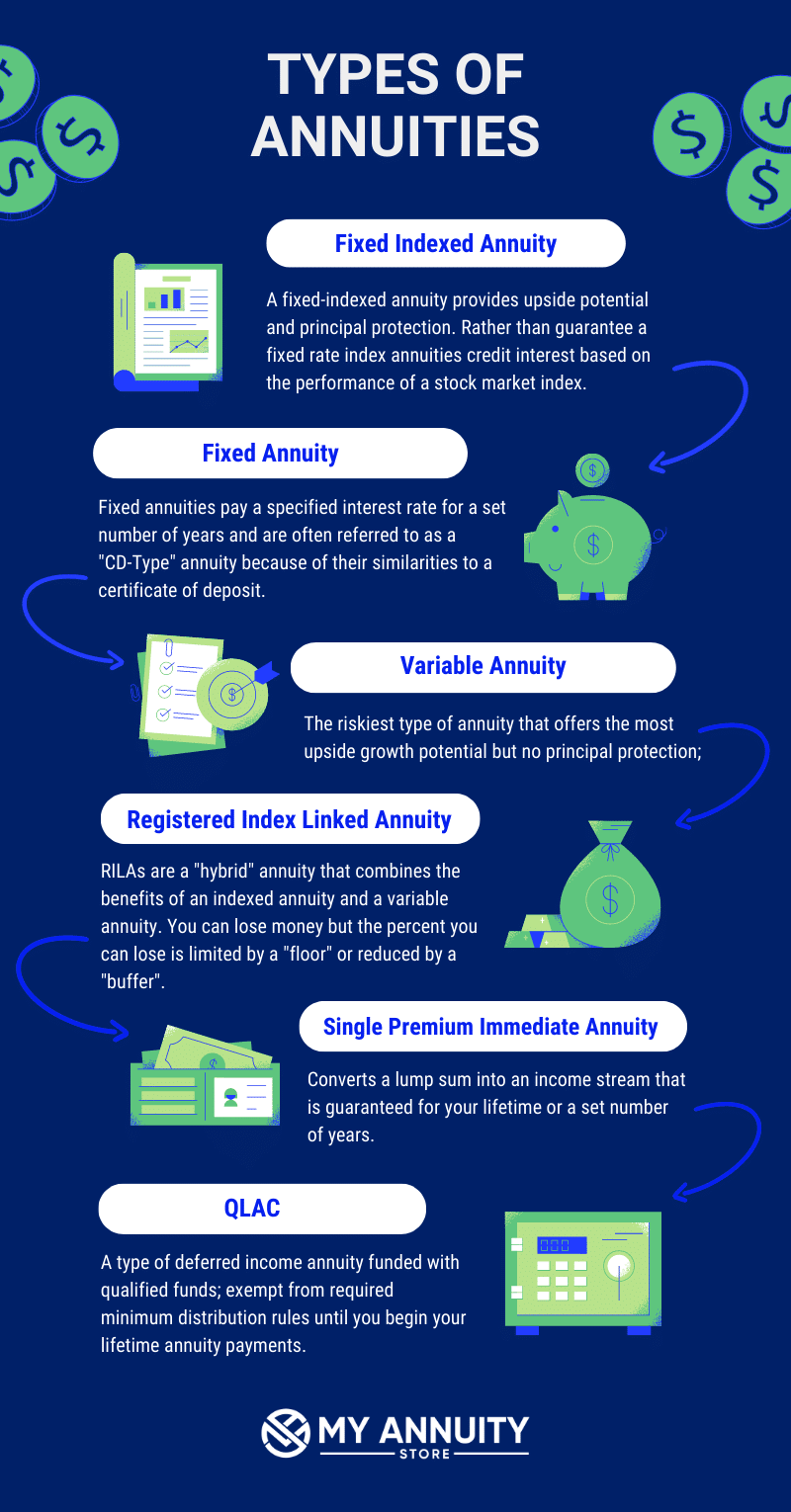All Categories
Featured
Table of Contents
Simply as with a fixed annuity, the owner of a variable annuity pays an insurance provider a swelling amount or series of payments for the promise of a series of future repayments in return. Yet as mentioned above, while a taken care of annuity grows at an ensured, consistent price, a variable annuity expands at a variable rate that relies on the efficiency of the underlying financial investments, called sub-accounts.

During the buildup phase, assets purchased variable annuity sub-accounts expand on a tax-deferred basis and are exhausted only when the agreement proprietor withdraws those incomes from the account. After the buildup phase comes the income phase. Gradually, variable annuity assets need to theoretically boost in worth until the agreement owner decides she or he wish to start taking out money from the account.
The most significant problem that variable annuities generally existing is high price. Variable annuities have a number of layers of charges and costs that can, in accumulation, create a drag of up to 3-4% of the agreement's worth each year.
Highlighting the Key Features of Long-Term Investments A Closer Look at Variable Vs Fixed Annuity Defining the Right Financial Strategy Pros and Cons of Various Financial Options Why Choosing the Right Financial Strategy Matters for Retirement Planning What Is Variable Annuity Vs Fixed Annuity: Explained in Detail Key Differences Between Different Financial Strategies Understanding the Risks of Fixed Vs Variable Annuity Pros Cons Who Should Consider Deferred Annuity Vs Variable Annuity? Tips for Choosing the Best Investment Strategy FAQs About Planning Your Financial Future Common Mistakes to Avoid When Choosing a Financial Strategy Financial Planning Simplified: Understanding Your Options A Beginner’s Guide to Retirement Income Fixed Vs Variable Annuity A Closer Look at Fixed Index Annuity Vs Variable Annuities
M&E cost charges are calculated as a percentage of the agreement worth Annuity issuers pass on recordkeeping and other administrative expenses to the agreement owner. This can be in the kind of a flat yearly fee or a percentage of the agreement value. Management charges might be consisted of as part of the M&E danger fee or may be assessed independently.
These fees can vary from 0.1% for passive funds to 1.5% or more for proactively managed funds. Annuity contracts can be personalized in a variety of methods to offer the certain demands of the agreement proprietor. Some common variable annuity riders include guaranteed minimum build-up benefit (GMAB), ensured minimum withdrawal benefit (GMWB), and assured minimal earnings benefit (GMIB).

Variable annuity payments offer no such tax obligation reduction. Variable annuities have a tendency to be highly ineffective cars for passing riches to the following generation because they do not take pleasure in a cost-basis modification when the initial agreement owner dies. When the proprietor of a taxed financial investment account dies, the price bases of the investments held in the account are readjusted to show the market prices of those investments at the time of the proprietor's death.
Highlighting the Key Features of Long-Term Investments Key Insights on Fixed Annuity Vs Variable Annuity What Is the Best Retirement Option? Pros and Cons of Various Financial Options Why Fixed Index Annuity Vs Variable Annuity Can Impact Your Future Fixed Income Annuity Vs Variable Annuity: A Complete Overview Key Differences Between Different Financial Strategies Understanding the Key Features of Long-Term Investments Who Should Consider Strategic Financial Planning? Tips for Choosing Choosing Between Fixed Annuity And Variable Annuity FAQs About Planning Your Financial Future Common Mistakes to Avoid When Planning Your Retirement Financial Planning Simplified: Understanding Fixed Annuity Vs Equity-linked Variable Annuity A Beginner’s Guide to Pros And Cons Of Fixed Annuity And Variable Annuity A Closer Look at Fixed Vs Variable Annuity Pros And Cons
Beneficiaries can acquire a taxed financial investment profile with a "clean slate" from a tax obligation viewpoint. Such is not the instance with variable annuities. Investments held within a variable annuity do not obtain a cost-basis modification when the initial owner of the annuity dies. This suggests that any built up latent gains will certainly be passed on to the annuity proprietor's beneficiaries, together with the linked tax obligation concern.
One substantial concern related to variable annuities is the possibility for problems of interest that may exist on the part of annuity salesmen. Unlike a monetary expert, that has a fiduciary duty to make financial investment choices that profit the client, an insurance coverage broker has no such fiduciary obligation. Annuity sales are highly financially rewarding for the insurance policy professionals that offer them due to high in advance sales payments.

Many variable annuity contracts include language which places a cap on the percentage of gain that can be experienced by specific sub-accounts. These caps prevent the annuity owner from fully joining a part of gains that might or else be appreciated in years in which markets create significant returns. From an outsider's perspective, presumably that investors are trading a cap on financial investment returns for the abovementioned assured flooring on investment returns.
As kept in mind above, surrender fees can drastically restrict an annuity owner's capacity to move properties out of an annuity in the very early years of the contract. Better, while many variable annuities allow agreement owners to withdraw a specified quantity throughout the buildup phase, withdrawals yet quantity normally lead to a company-imposed cost.
Withdrawals made from a set rate of interest financial investment alternative can also experience a "market price adjustment" or MVA. An MVA adjusts the value of the withdrawal to mirror any kind of adjustments in rates of interest from the moment that the cash was spent in the fixed-rate alternative to the moment that it was taken out.

Frequently, also the salesmen that market them do not completely recognize just how they work, therefore salespeople sometimes take advantage of a buyer's feelings to offer variable annuities instead than the values and suitability of the items themselves. Our team believe that investors should completely recognize what they own and how much they are paying to own it.
Decoding How Investment Plans Work A Closer Look at Annuity Fixed Vs Variable Breaking Down the Basics of Variable Vs Fixed Annuity Advantages and Disadvantages of Fixed Interest Annuity Vs Variable Investment Annuity Why Fixed Index Annuity Vs Variable Annuities Matters for Retirement Planning How to Compare Different Investment Plans: Explained in Detail Key Differences Between Different Financial Strategies Understanding the Risks of Long-Term Investments Who Should Consider Immediate Fixed Annuity Vs Variable Annuity? Tips for Choosing the Best Investment Strategy FAQs About Planning Your Financial Future Common Mistakes to Avoid When Planning Your Retirement Financial Planning Simplified: Understanding Variable Vs Fixed Annuities A Beginner’s Guide to Smart Investment Decisions A Closer Look at Fixed Vs Variable Annuity Pros Cons
The exact same can not be stated for variable annuity assets held in fixed-rate financial investments. These properties legitimately belong to the insurer and would certainly for that reason go to danger if the business were to fall short. Any guarantees that the insurance coverage firm has actually agreed to provide, such as a guaranteed minimal earnings benefit, would certainly be in concern in the occasion of a business failing.
Possible buyers of variable annuities should recognize and think about the monetary problem of the issuing insurance policy company prior to getting in into an annuity contract. While the benefits and downsides of numerous types of annuities can be discussed, the genuine problem surrounding annuities is that of suitability. Simply put, the question is: that should have a variable annuity? This inquiry can be tough to answer, provided the myriad variations offered in the variable annuity cosmos, yet there are some fundamental guidelines that can help investors determine whether annuities ought to play a role in their economic strategies.
As the stating goes: "Purchaser beware!" This article is prepared by Pekin Hardy Strauss, Inc. Variable annuity investment options. ("Pekin Hardy," dba Pekin Hardy Strauss Riches Monitoring) for educational objectives only and is not planned as a deal or solicitation for organization. The information and information in this write-up does not make up lawful, tax obligation, bookkeeping, investment, or other expert guidance
Table of Contents
Latest Posts
Understanding Financial Strategies A Closer Look at Fixed Indexed Annuity Vs Market-variable Annuity Defining Fixed Annuity Vs Equity-linked Variable Annuity Benefits of Fixed Vs Variable Annuities Wh
Highlighting What Is Variable Annuity Vs Fixed Annuity A Comprehensive Guide to Investment Choices Breaking Down the Basics of Investment Plans Pros and Cons of Variable Vs Fixed Annuities Why What Is
Highlighting the Key Features of Long-Term Investments A Comprehensive Guide to Investment Choices Defining the Right Financial Strategy Pros and Cons of Various Financial Options Why Choosing the Rig
More
Latest Posts